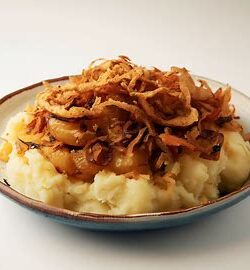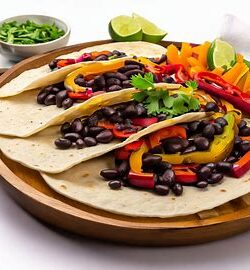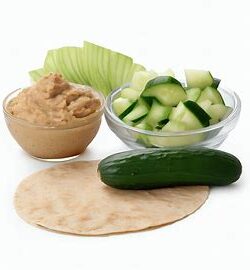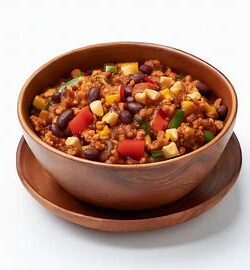Southwestern Kale and Butternut Squash Recipe
If you’re looking to elevate your culinary adventures and tantalize your taste buds with a fusion of vibrant flavors, then our savory delight Southwestern Kale and Butternut Squash recipe is a must-try. This hearty and nutritious dish combines the earthy sweetness of butternut squash with the robust and smoky notes of southwestern spices, creating a harmonious balance that will leave you craving more.
Whether you’re a kale enthusiast or simply seeking a delicious way to incorporate more veggies into your diet, this recipe is a winner.
Ingredients:
- 1 small butternut squash, peeled, seeded, and cubed
- 1 bunch kale, stems removed and leaves chopped
- 1 tablespoon olive oil
- 1 teaspoon chili powder
- 1/2 teaspoon cumin
- 1/2 teaspoon paprika
- 1/4 teaspoon garlic powder
- Salt and pepper to taste
- Optional toppings: avocado slices, cotija cheese, lime wedges
Instructions:
1. Preparing the Butternut Squash:
Begin by preheating your oven to 400°F (200°C). Peel, seed, and cut the butternut squash into bite-sized cubes. This sweet and nutty vegetable will serve as the hearty foundation of our dish.
2. Infusing Southwestern Flavors:
In a large bowl, combine the cubed butternut squash with olive oil, chili powder, cumin, paprika, garlic powder, salt, and pepper. Toss the squash gently until it is evenly coated with the aromatic spices. The combination of chili powder, cumin, and paprika will infuse the squash with the vibrant flavors of the Southwest.
3. Roasting the Butternut Squash:
Transfer the seasoned butternut squash to a baking sheet, ensuring the pieces are spread out in a single layer. Roast the squash in the preheated oven for approximately 20-25 minutes, or until the cubes are tender and develop a light golden-brown color. The roasting process will intensify the sweetness of the squash while adding a delightful caramelization.
4. Sautéing the Kale:
While the butternut squash roasts, it’s time to prepare the kale. Heat a small amount of olive oil in a large skillet over medium heat. Add the chopped kale leaves and cook them until wilted, which typically takes about 5-7 minutes. Season the kale with salt and pepper to taste, allowing the natural flavors of this leafy green to shine.
5. Bringing It All Together:
Once the butternut squash has achieved its desired tenderness and color, carefully add it to the skillet with the cooked kale. Stir the ingredients together, ensuring that the smoky flavors of the southwestern spices coat each element. Allow the kale and squash to meld together for a minute or two, allowing their flavors to harmonize.
6. Serving Suggestions:
Serve the Southwestern Kale and Butternut Squash as a delightful side dish that pairs well with grilled meats or roasted chicken. For a heartier meal, use this flavorful combination as a base for a grain bowl, adding quinoa or brown rice for additional sustenance. For a burst of freshness and creaminess, consider garnishing your creation with avocado slices, a sprinkle of cotija cheese, and a squeeze of lime juice.
Conclusion
With its robust southwestern spices, the Southwestern Kale and Butternut Squash recipe is a delicious and nutritious way to add a touch of flair to your culinary repertoire. This dish offers a delightful blend of textures and flavors, combining the natural sweetness of butternut squash with the smoky and aromatic essence of southwestern.
HISTORY
The History of Butternut Squash Recipes: From Ancient Origins to Modern Delights
Butternut squash, with its distinct shape and rich flavor, has a long and fascinating history in culinary traditions around the world. Believed to have originated in Central and South America, this versatile winter squash has evolved over time, becoming a beloved ingredient in a wide range of recipes. Let’s explore the captivating history of butternut squash recipes and its journey from ancient origins to modern culinary delights.
Ancient Origins: The history of butternut squash dates back thousands of years. It is believed to have originated in the region that encompasses present-day Mexico and Guatemala. The ancient Mayans and Aztecs were among the first civilizations to cultivate and consume butternut squash. They recognized its nutritional value and incorporated it into their diets as a reliable food source.
Introduction to Europe: With the exploration of the Americas by European explorers, butternut squash made its way to Europe in the 16th century. It was introduced by Christopher Columbus, who brought various types of squash, including butternut squash, back to Spain. From there, the cultivation of butternut squash spread throughout Europe, becoming a popular vegetable in many countries.
Culinary Uses: Butternut squash’s mild, sweet flavor and creamy texture lend themselves well to a variety of culinary preparations. In traditional cuisines, it is often used in both savory and sweet dishes.
Roasting and Baking: Roasting and baking butternut squash have been popular cooking methods for centuries. The squash is often halved, seeds removed, and roasted until tender. The resulting roasted butternut squash can be served as a side dish or used as a base for other recipes. Its natural sweetness is enhanced through the caramelization process, creating a delicious and comforting flavor profile.
Soups and Stews: Butternut squash is a common ingredient in soups and stews around the world. In North America, butternut squash soup has become a classic autumnal dish, often flavored with warming spices like cinnamon and nutmeg. In West Africa, butternut squash is used in traditional dishes such as egusi soup, where it adds depth and creaminess to the stew.
Pasta and Risotto: Butternut squash is also frequently used in pasta dishes and risottos. In Italian cuisine, it is a popular ingredient in dishes like butternut squash ravioli and risotto alla zucca. The vibrant color and rich flavor of the squash add a delightful twist to these comforting dishes.
Modern Culinary Delights: In recent years, butternut squash has experienced a resurgence in popularity as people have become more adventurous in their culinary pursuits. Chefs and home cooks alike have embraced this versatile ingredient, experimenting with creative and innovative recipes.
Butternut Squash in Vegetarian and Vegan Cuisine: Butternut squash has become a go-to ingredient for vegetarian and vegan recipes. Its natural sweetness and creamy texture make it an excellent substitute for dairy in dishes like butternut squash mac and cheese or butternut squash-based sauces and dressings. It adds depth and complexity to plant-based meals while providing essential nutrients.
Global Fusion and New Flavor Combinations: Butternut squash has also found its way into global fusion cuisine, where it is paired with flavors and ingredients from different culinary traditions. It is not uncommon to find butternut squash incorporated into curries, stir-fries, and even desserts, where its unique qualities create a harmonious blend of flavors.
The history of butternut squash recipes is a testament to the versatility and deliciousness of this beloved winter squash. From its ancient origins in Central and South America to its widespread popularity in modern-day cuisine, butternut squash continues to captivate and arouse our taste buds.




